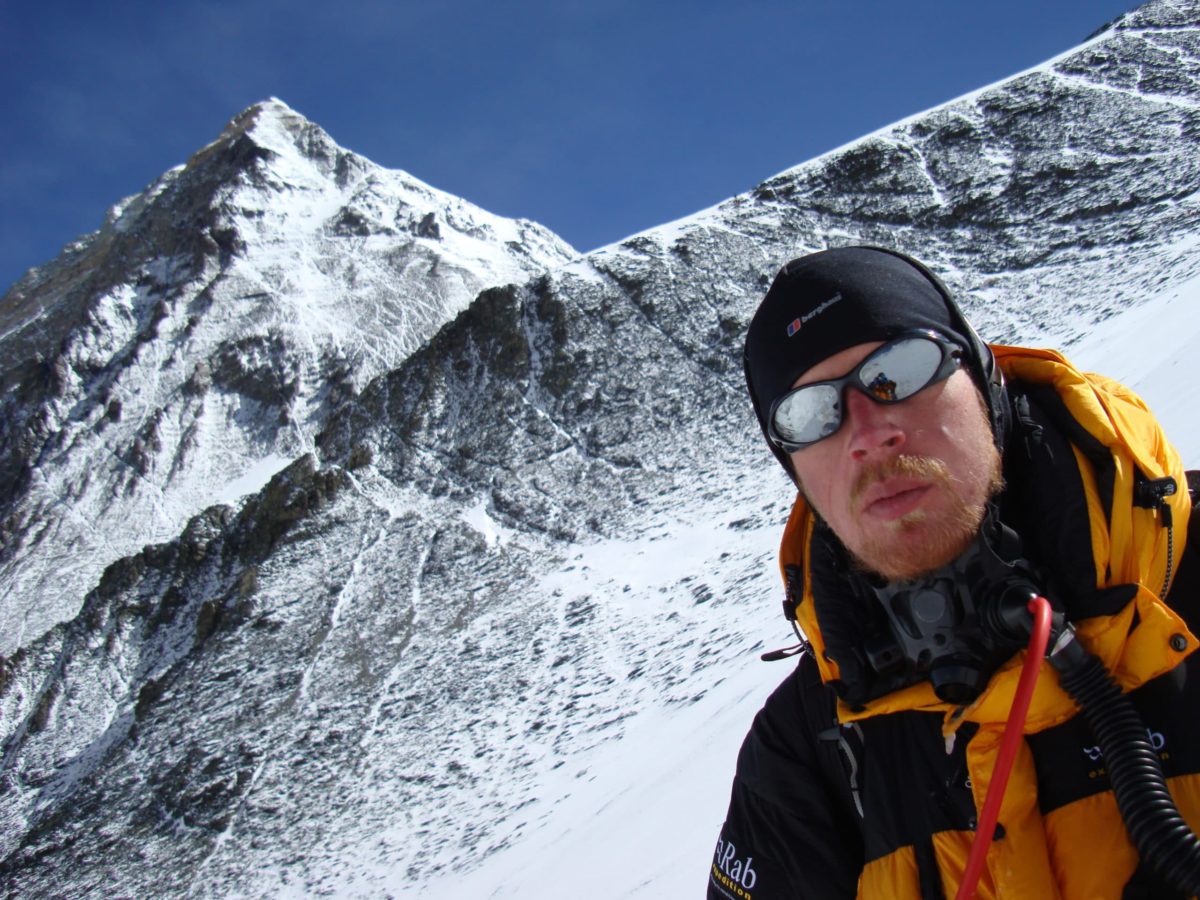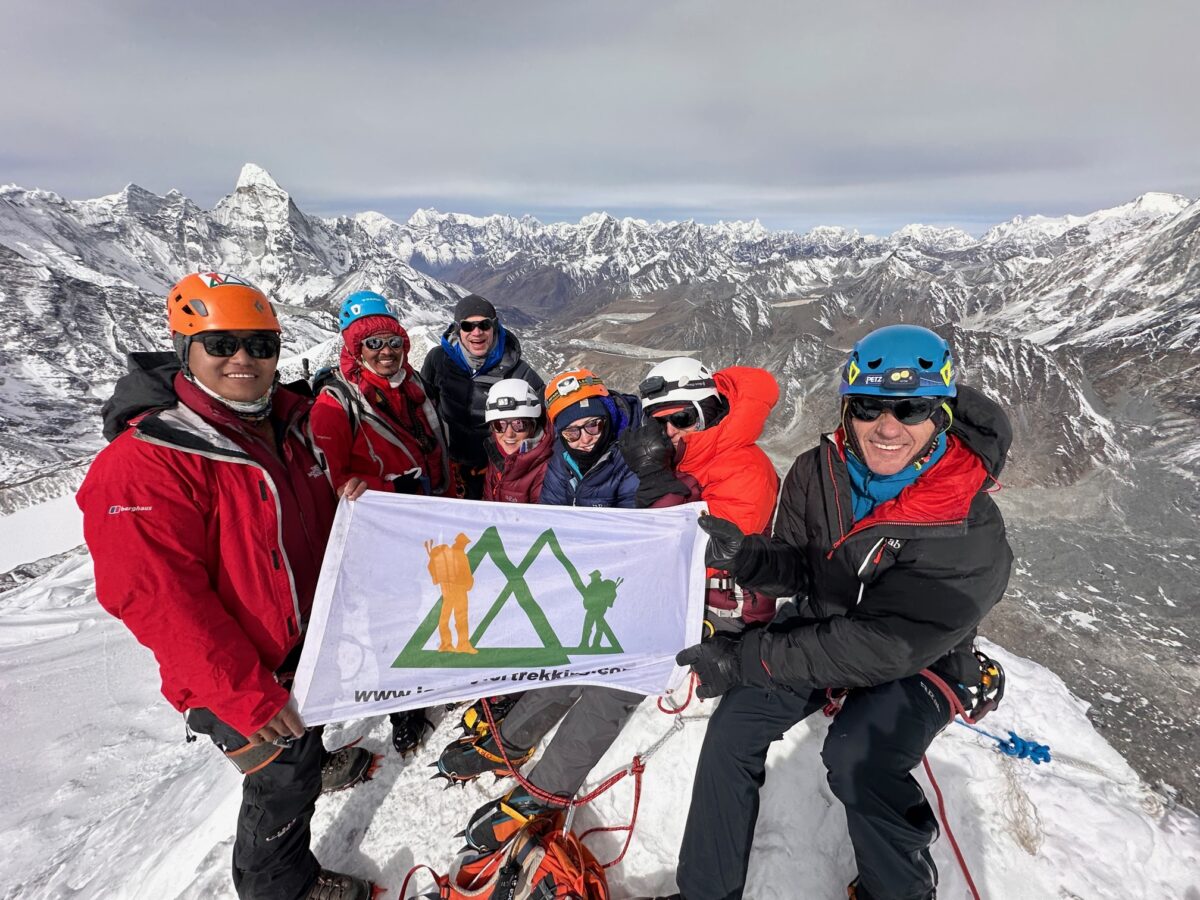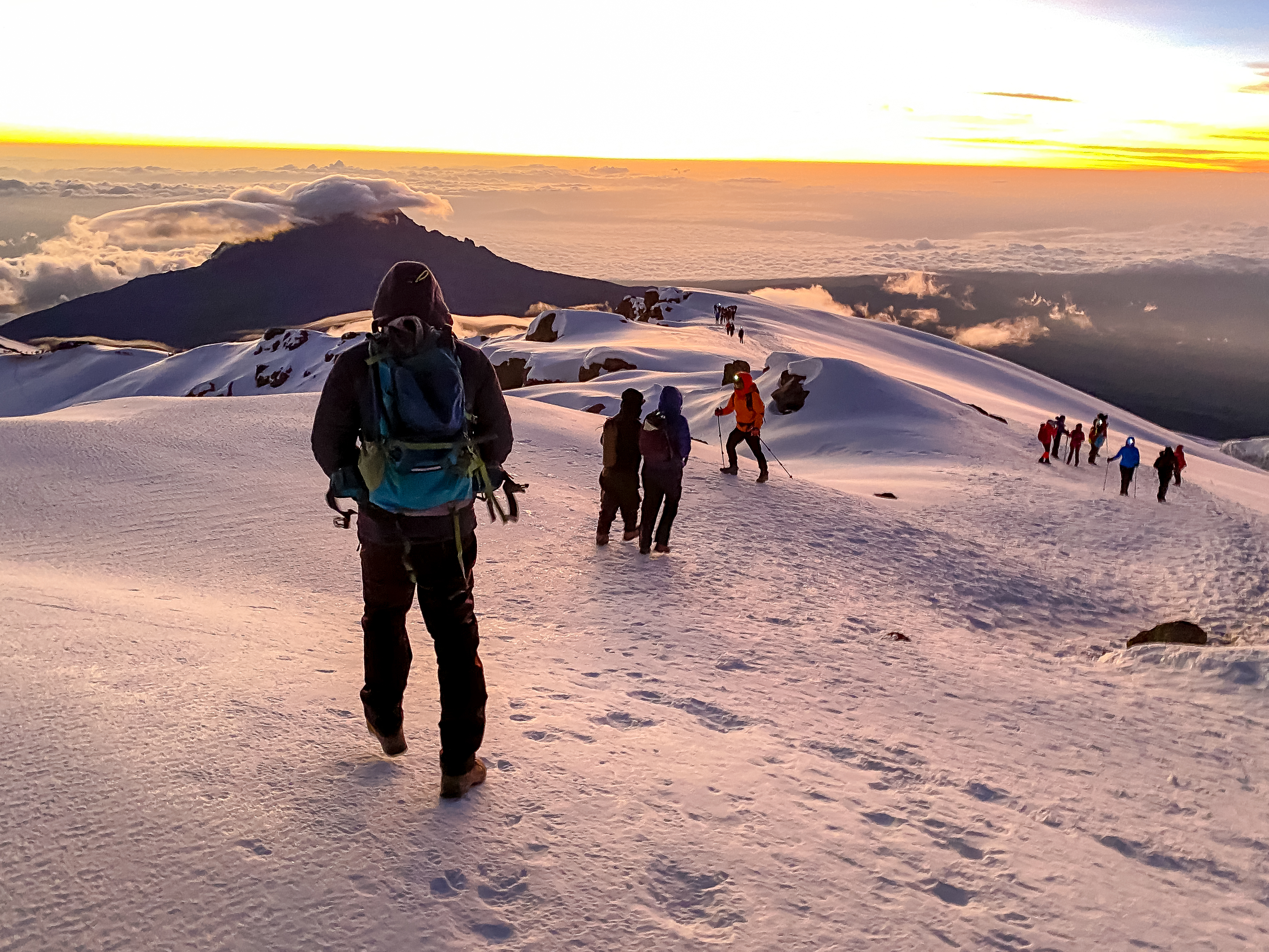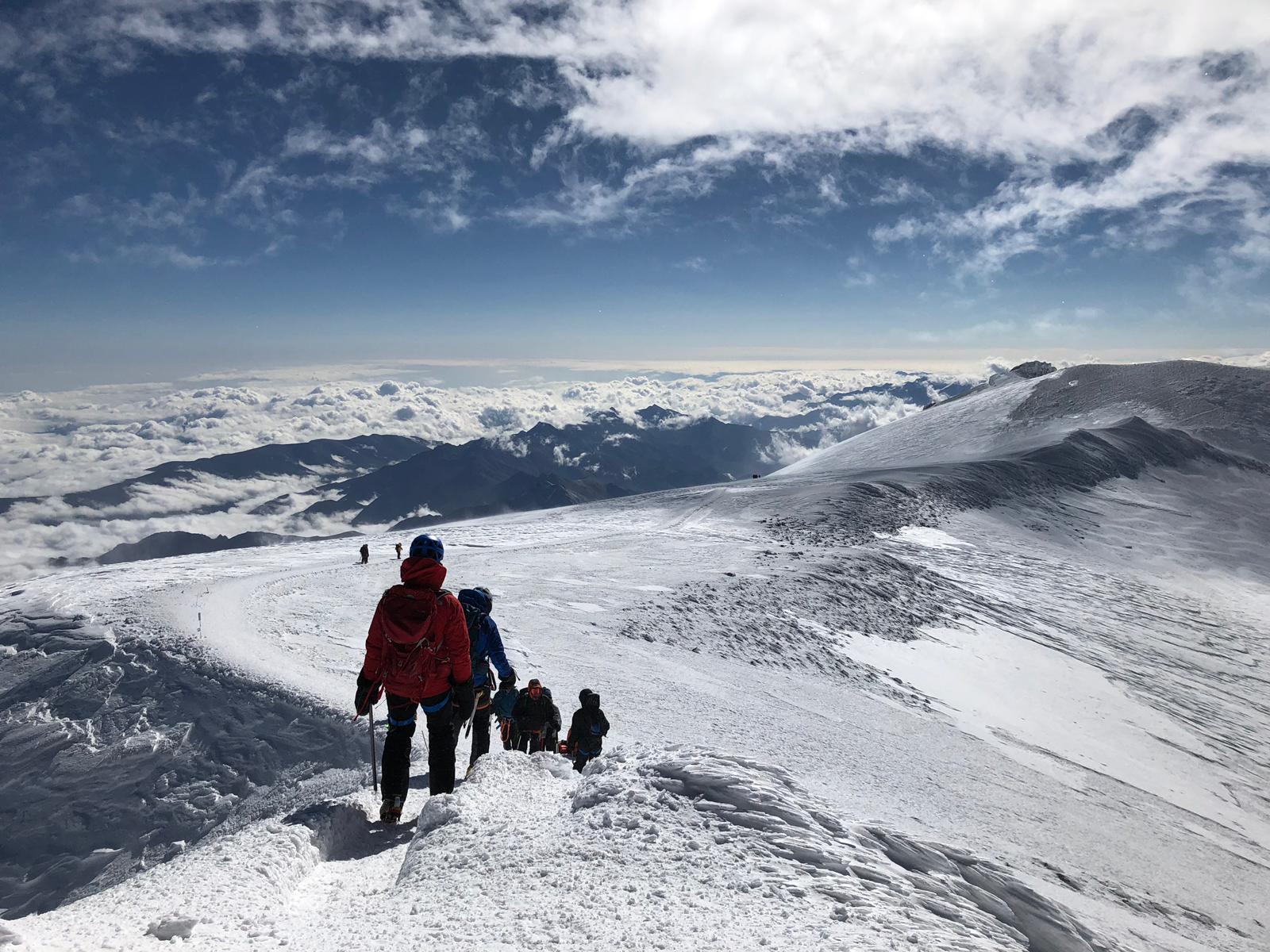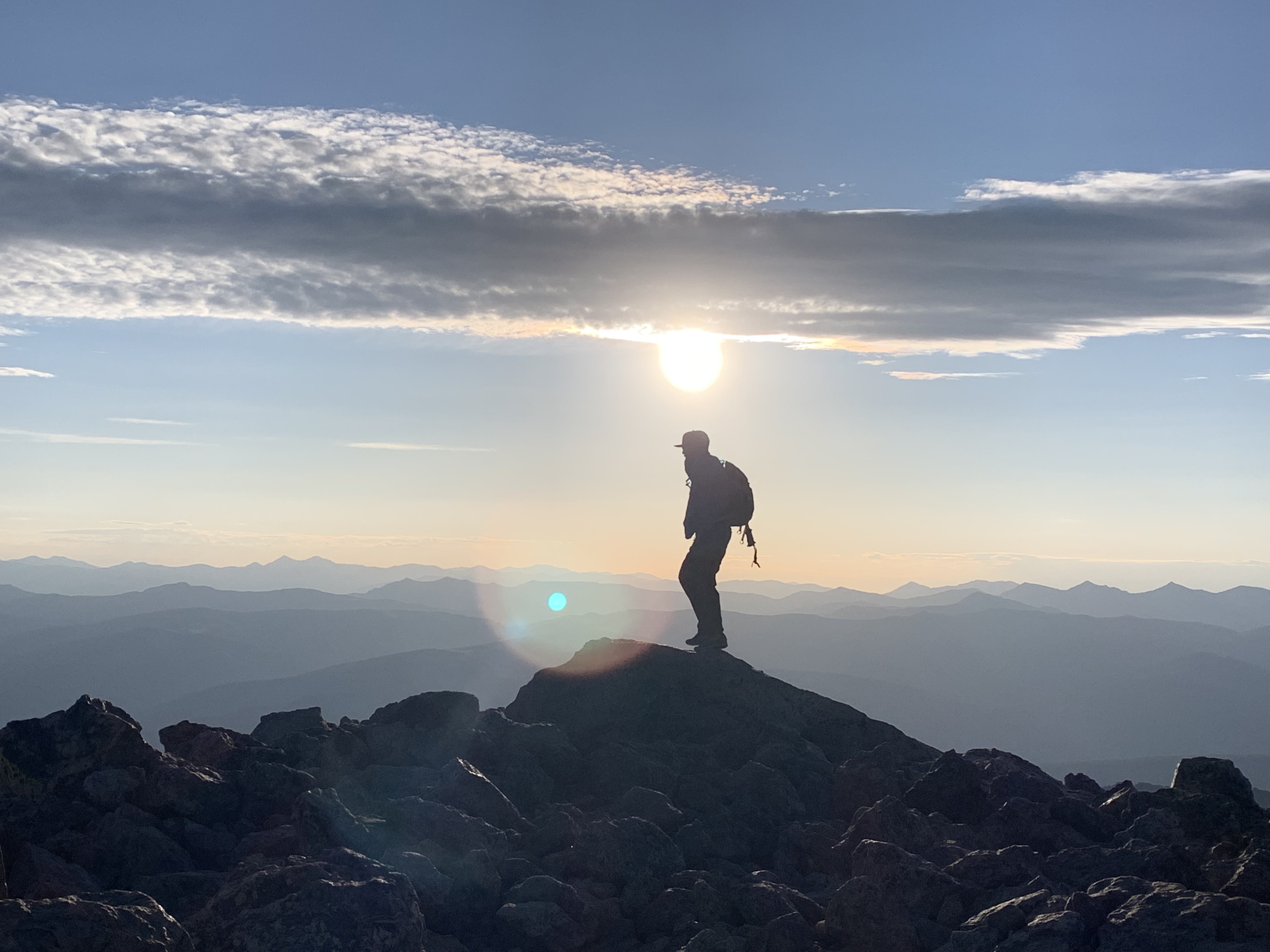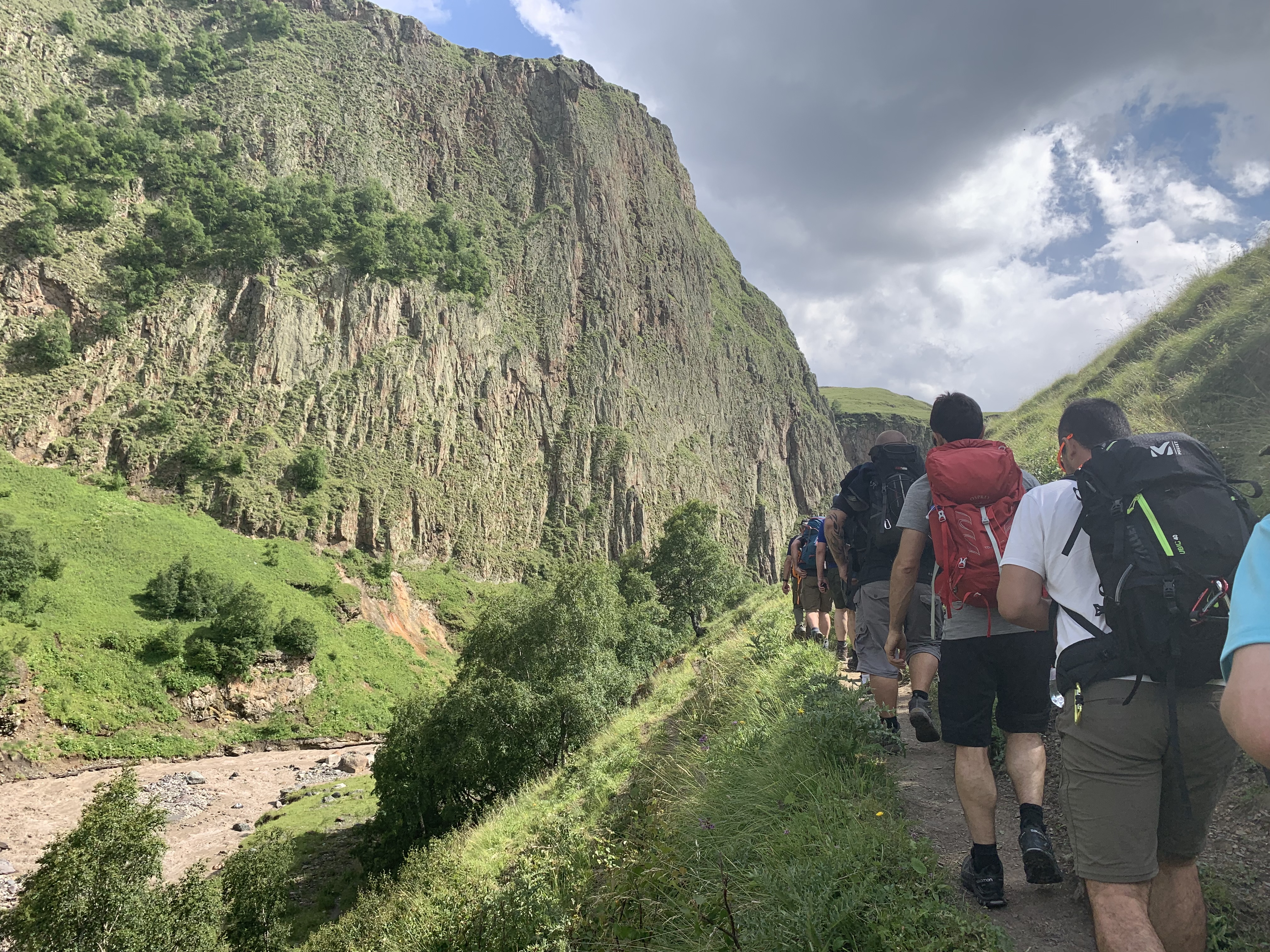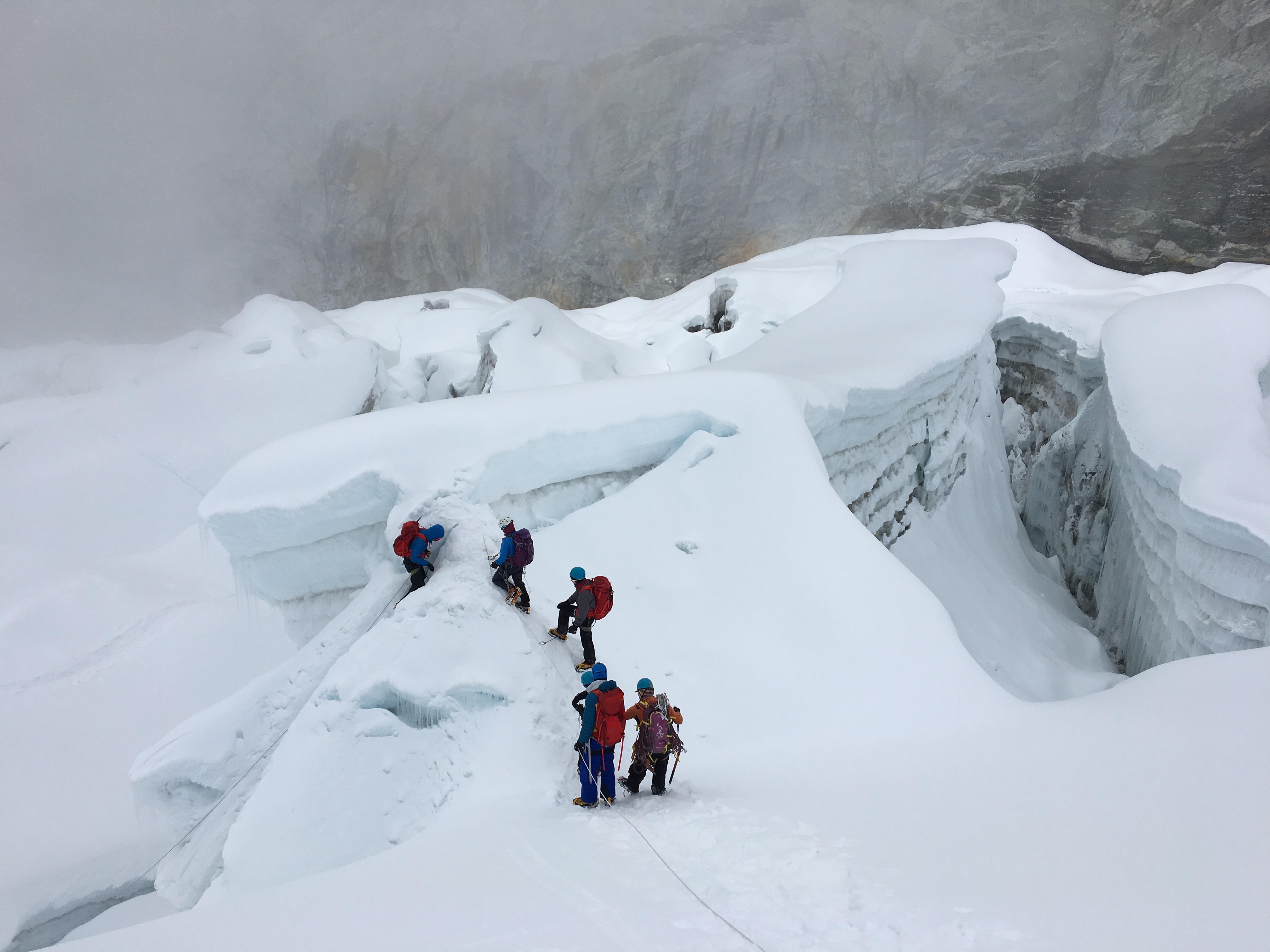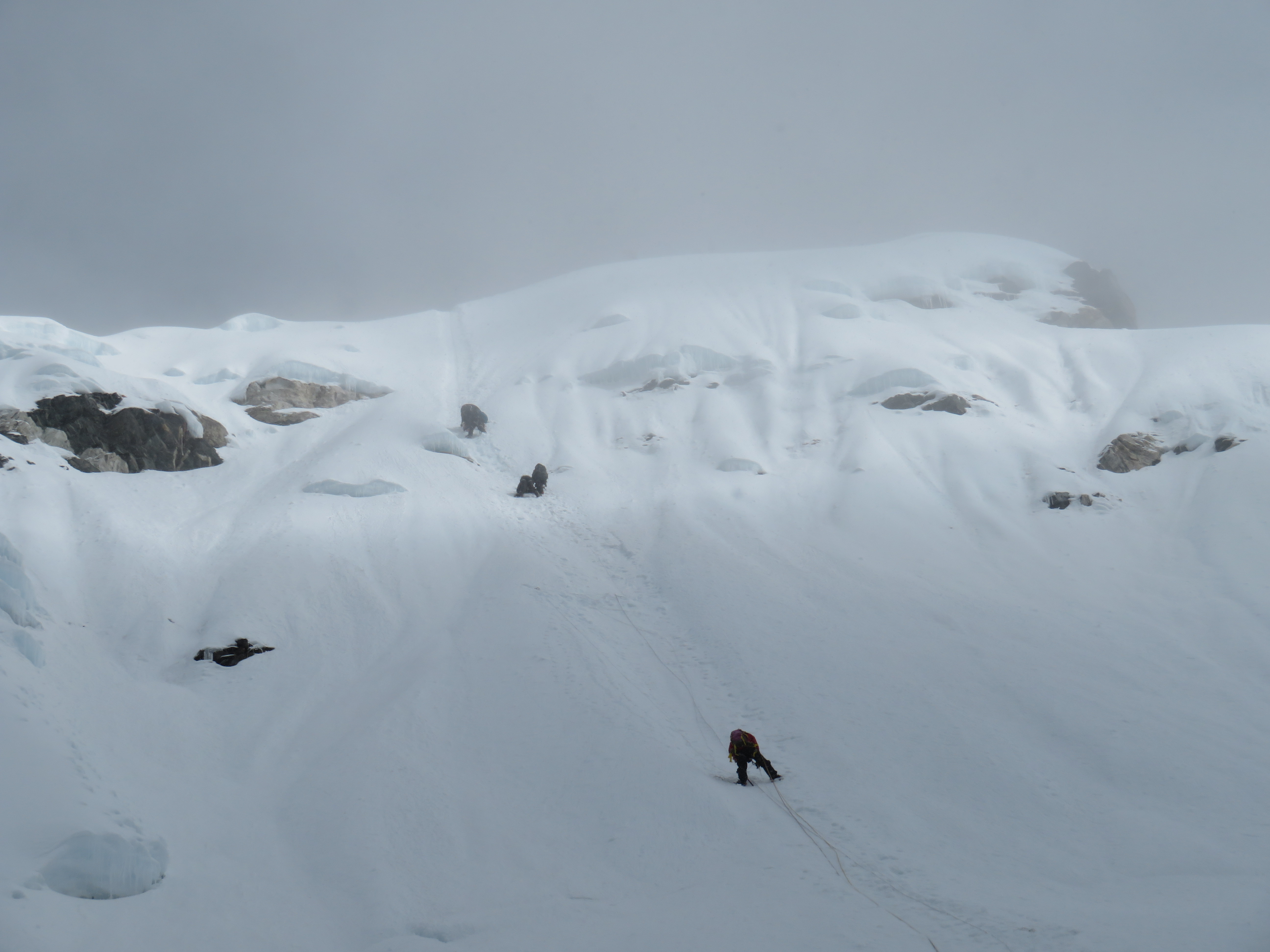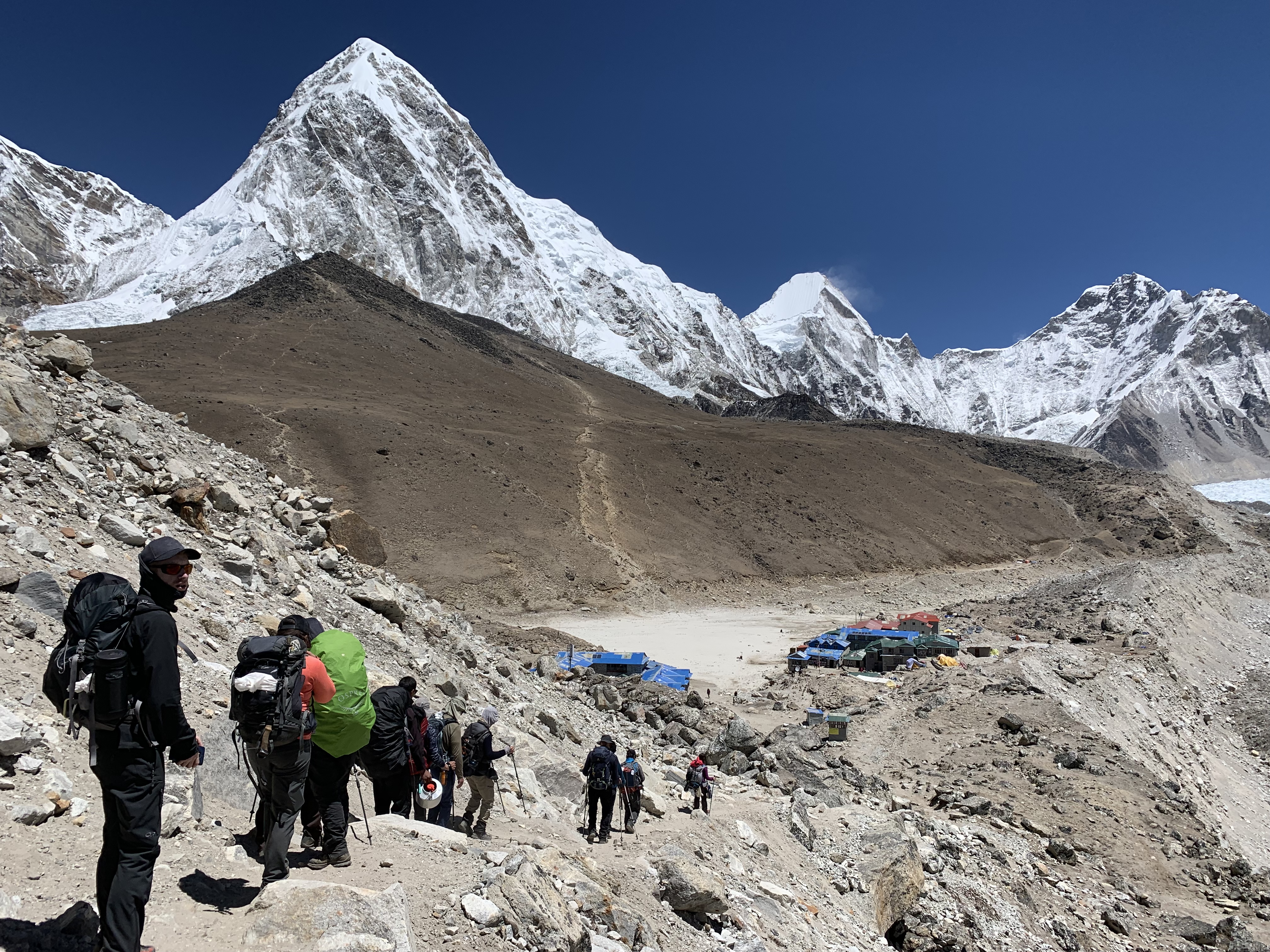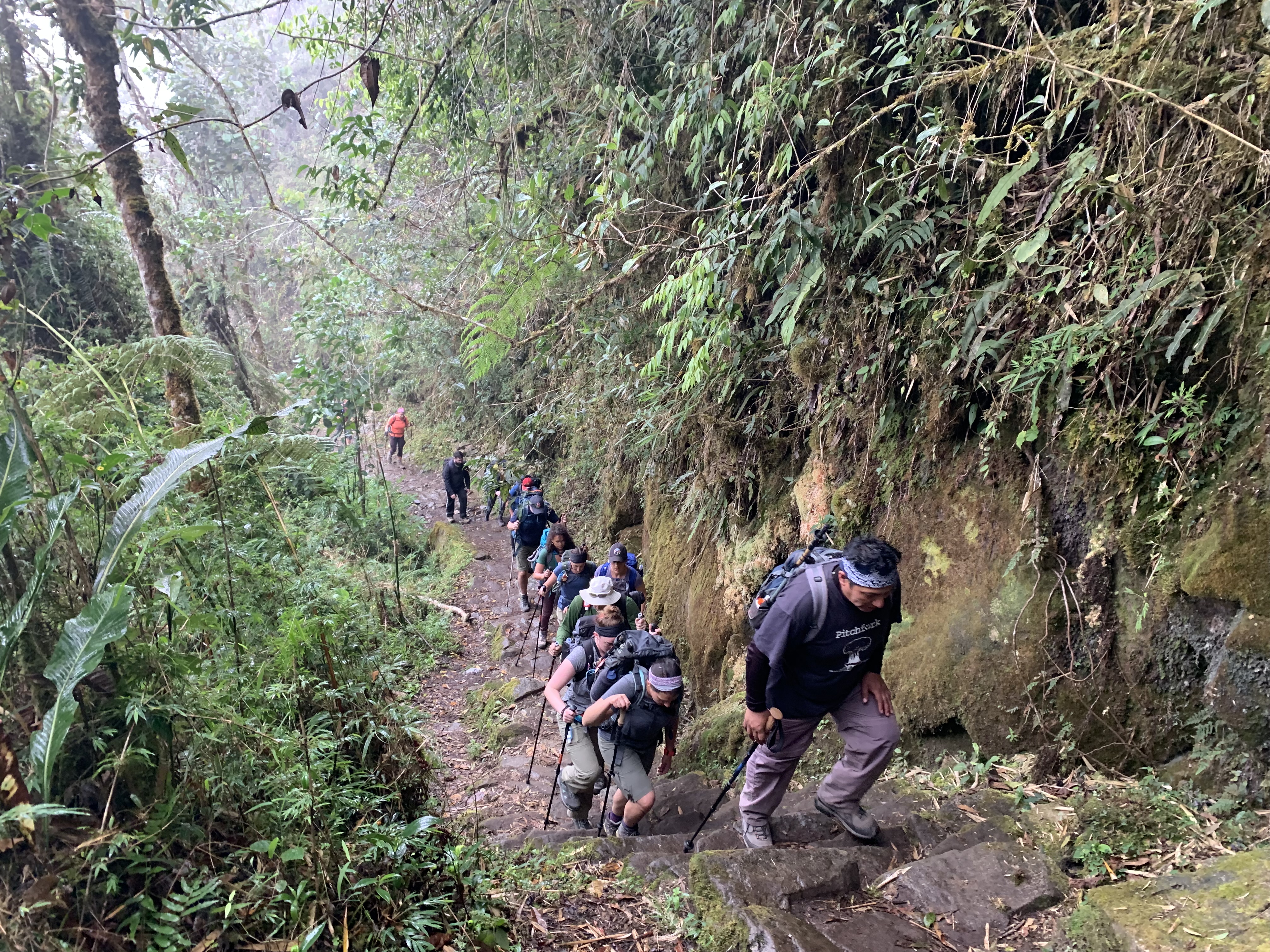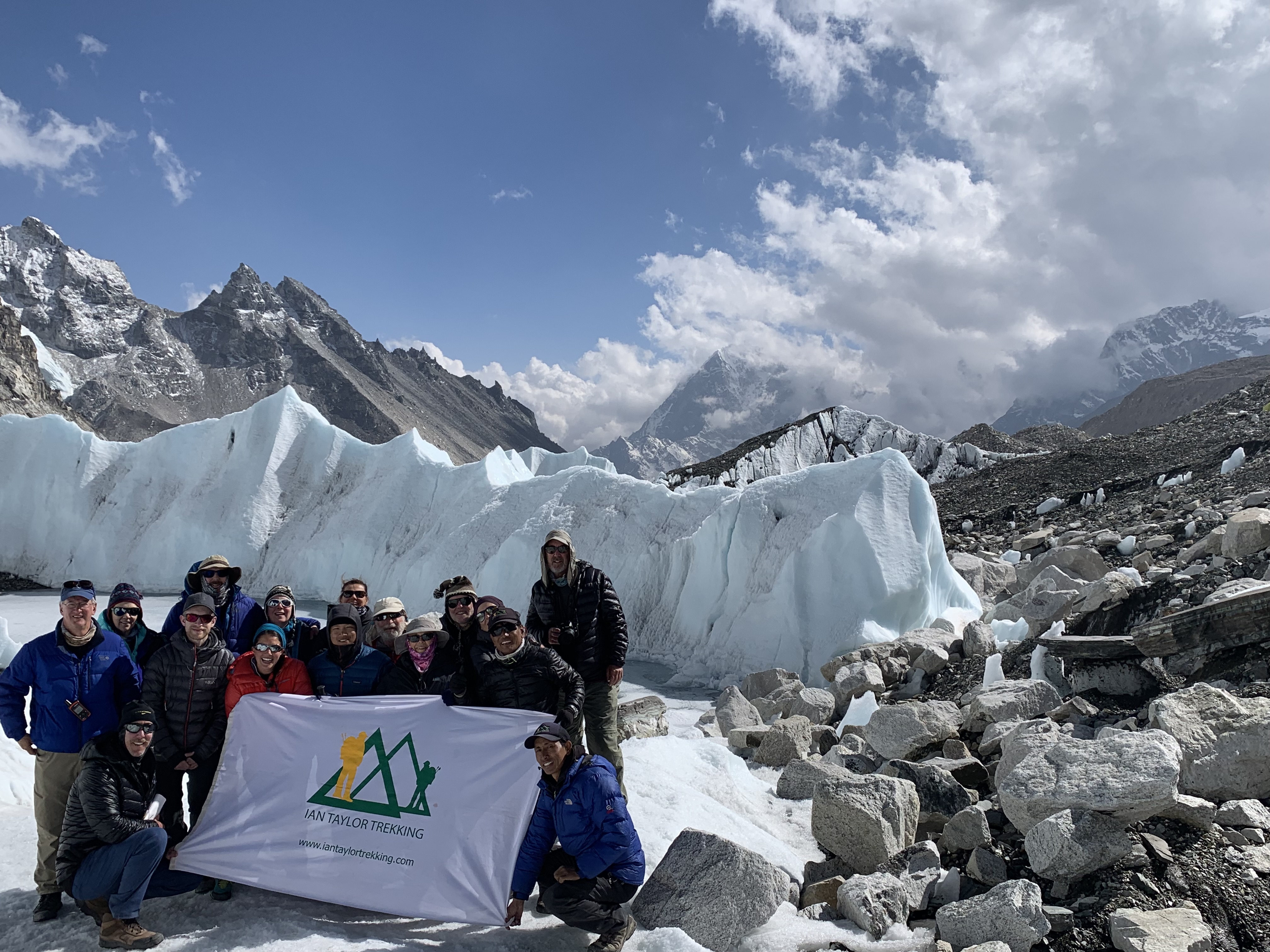How can you Train for High Altitude and Low Oxygen Environments. A big question we get asked all the time. When taking on a trekking or mountaineering adventure in a low oxygen environment, there is very specific training you need to be doing. The following information will help you determine what training and preparations you should be considering. Read some reviews from our trips.
Training for High Altitude
Coming physically prepared with the specific training for your specific trip is essential. Our main priority is presenting you with the right information in order for you to train in a way that will give you the best chance of safely and successfully reaching your goal in the mountains.
What is High Altitude
High altitude is generally defined as any elevation above 1,500m/ 5,000 feet above sea level. This elevation level causes a decrease in air pressure and oxygen levels, leading to various physiological effects on the body.
Symptoms such as shortness of breath, fatigue, headache, and nausea can occur as a result of decreased oxygen saturation in the blood. Training for low oxygen environments involves acclimatizing the body to these changes, which can enhance performance and minimize the risk of altitude sickness. If you’re looking to improve your fitness for high-altitude activities, understanding the effects of altitude on the body is crucial for optimal performance.
Trigger Point at High Altitude
Yes, there are different trigger points associated with high altitude that can affect individuals differently. These trigger points refer to specific elevations at which physiological changes in the body become more pronounced, leading to increased risk of altitude sickness and other related symptoms.
Firstly, one commonly recognized trigger point is 2,438mm/ 8,000 feet above sea level. At this elevation, some individuals may start to experience mild symptoms of altitude sickness, such as headache, dizziness, and shortness of breath.
Secondly, another trigger point is 3,658m/ 12,000 feet above sea level. At this elevation, the body’s ability to acclimatize to the low oxygen levels is significantly reduced, and the risk of altitude sickness increases. This is why you need more time at this elevation.
Finally, the most significant trigger point is 5,500m/ 18,000 feet above sea level. At this elevation, the body experiences severe physiological changes due to the extremely low levels of oxygen, and the risk of severe altitude sickness, such as high altitude pulmonary edema (HAPE) and high altitude cerebral edema (HACE), is greatly increased.
Hydration and High Altitude
It’s important to note that these trigger points can vary depending on factors such as age, fitness level, and previous exposure to high altitude, and some individuals may be more susceptible to altitude sickness than others. Proper acclimatization and preparation, including gradual ascent and hydration, can help reduce the risk of altitude sickness and other related symptoms.
How to Train for High Altitude and Low Oxygen Environments
A high altitude adventure is often the most exciting trek of a person’s life. However, the preparation for this unforgiving environment can sometimes feel a little intimidating. Whether this is your first time ascending to altitude or if you’re a high altitude pro, the importance of physically preparing for low oxygen environments cannot be overstated.
The main risk many people worry about when considering a trek to high altitude is developing mountain sickness, or acute altitude illness. The signs and symptoms of acute altitude illness can sometimes develop as low as at 2,000m/ 6,560 feet of elevation. Therefore it’s important to train for that low oxygen environment, and to be aware of how you can mitigate the potential risks of recreating at altitude.
While it isn’t possible to completely eliminate the chance of developing an acute altitude illness, there are many steps you can take to best prepare yourself for that challenging low oxygen environment. Some components you’re born with. For instance, being lucky enough to have genes that allow you to function well on low oxygen.
On the other hand, there are many factors you have full control over. Like developing a training plan to best prepare yourself physically for the demands of exercise at altitude. Here we’ll discuss factors that affect how a person responds to high altitude and outline some of those proactive steps you can take to best prepare yourself for a safe and successful high altitude trek. Contact us.
Gradually Increase Your Exposure to High Altitude
One of the most effective things you can do to acclimate to high altitude is, understandably, spending increasingly more time at high altitude. This means training at progressively higher altitudes before your trek. Also, you want to ensure the trek itself involves a gradual ascent to your target elevation.
Most treks are already planned to have a gradual rate of ascent built into the itinerary. This means that you just have to focus on the pre-trek preparation. If you have access to high altitude locations nearby, plan weekend hikes that slowly gain more elevation and reach higher altitudes.
Even if you don’t live at altitude, intermittent hikes of increasingly higher altitudes are a fantastic way to introduce your body to the demands of low oxygen environments. One study showed that mountaineers spending five or more days above 3,000m/ 9,840 feet in the 2 months before an ascent to 4,500m/ 14,760 feet had fewer cases of acute mountain sickness than the mountaineers that had not had any pre-exposure to altitude.
This supports the advice that even those that don’t have regular access to high-altitude environments can benefit from scheduled outings or day hikes at altitude to help them acclimatize.
While the following components we’ll talk about below are other essential components of preparing for a high altitude trek, nothing can quite prepare you for a low oxygen environment than actually training in a low oxygen environment.
To learn more about the importance of altitude pre-exposure before a trek, you can check out link in the sources below for a review of acclimatization recommendations. Overall, the general consensus is that if you have the option to train at altitude – take it! Follow us on Instagram.
Genetics
While training can have a huge impact on how you function at altitude, you still can’t escape the impact of genetics. Your genes play a role in setting your exercise capacity and ability to function with low oxygen.
Basically, this means that some people are simply born with a greater ability to exercise at altitude. This also means that some people are more at risk for developing acute mountain illness than others, even with the same preparation and acclimatization. Remember we always have more acclimatization built into our trips.
For example, some people get altitude illness every time they venture above a certain altitude, such as traveling directly to ski resorts at 8,000 feet of elevation. Others seem never to get altitude illness – although no one is truly immune.
High altitude pulmonary edema (HAPE), one type of acute altitude illness that causes fluid to accumulate in the air sacs of the lungs, is especially linked to genetics; some people will develop HAPE above certain altitudes no matter how slowly they ascend or how well they train.
Lung Capacity
The causes of a person’s susceptibility to developing an acute altitude illness are multifactorial and not completely understood; there are countless components of a person’s physiology that will dictate how their body responds to a low oxygen environment.
In the case of HAPE, factors like lung size or the amount of vein-constricting peptides you produce can affect how your cardiovascular system responds to breathing in air with low oxygen. Learn more.
While some genetic factors are innate and unchanging, other genetic factors can be altered by a low oxygen environment. The article “High-altitude living has changed more than just the genes of some Peruvians” reveals how an Indigenous population in Peru, the Quechua, have developed chemical alterations to their DNA as a result of living in a high-altitude environment.
Researchers found that both being born at altitude and living continuously at altitude can induce changes to DNA that, for example, instruct your body to produce more red blood cells to help you carry more oxygen. This goes to show how effective the body can be at adapting to high altitude environments. However, it is also demonstrative of how complicated it can be to understand how any one person’s body will respond to high altitude.
No Substitute for More Acclimatization
For the most part, unless you happen to have an in-depth understanding of your own genetic makeup or a history of developing altitude sickness, you probably won’t have much actionable information about how your genes will influence your experience at high altitude.
It’s simply important to know that your genetics do play a role in your ability to function at altitude. No matter how well you prepare, there is still a risk of developing acute mountain illness. Because of these unknowns, your first trip to high altitude should be quite conservative in both maximum altitude as well as the rate of ascent.
Consider a VO2 Max Test
Your VO2 max is the maximum amount of oxygen your body can consume and utilize during intense exercise. It is like measuring the power of your engine. VO2 max decreases at altitude, causing your body to work harder than it does at lower elevations.
This means the same hiking pace you might be able to do easily at sea level can feel exhausting at higher altitudes. Knowing your VO2 max can serve as a training tool as you prepare for your high altitude trek; if you’re increasing your VO2 max, you’re likely also increasing your fitness. Learn more.
You can measure your VO2 max in a lab or sports facility, on some fitness devices, or even online calculators. Armed with that knowledge, you can then begin a training plan aimed at increasing your VO2 max (incorporating workouts like tempo runs) and monitor your improvements.
A Word of Caution
However: a higher VO2 max does not necessarily mean that you will perform well at altitude or avoid altitude sickness. A higher level of physical fitness and exercise capacity, which can be monitored with your VO2 max, is most helpful in terms of making sure you can cope with the expected losses in physical performance at altitude.
It’s estimated that you can lose about 1% of your exercise capacity for every 100m you gain above 1,500m. This emphasizes the importance of starting a high-altitude trek with a high level of physical fitness.
Training With Weight
Now that you’re aware of your VO2 max, how exactly can you go about improving it? Training with weights is one solution. As with altitude, weighted hikes or runs are something to be approached gradually to prevent injury.
Slowly increase the weight you carry in your pack until you exceed the weight you’ll be carrying on your trek. This will help you prepare for those loads over long distances.
For a trek to Everest or Kilimanjaro we recommend building up to carrying double the weight you will carry on the trip. In addition, if you can’t access high altitude locations nearby, weight training is a great alternative.
Even at low altitudes or at sea level, weighted exercise will increase your overall fitness, strength and endurance. Get in touch and learn more from our experience. Learn more.
Be Light, Lean, and Strong
When preparing for a high altitude trek, you must consider the physical toll the trek will take on your body. Weight, aerobic fitness, and overall strength will all factor into how your body responds to the large demands of trekking at altitude. Strength training will help prepare your leg muscles and upper body for shouldering a heavy load, as will core exercises.
Aerobic activity is another key component for preparing your body for high altitude adventures. In addition, both endurance and interval training have been shown to help increase a person’s VO2 max.
While running and hiking might be the closest approximation to your eventual trek activities, there are other options too. Swimming or biking can also be great ways to condition your body for those long days on the mountain.
Of course, the best aerobic preparation would be training in similar conditions that you will encounter on your trek; ideally you can find mountain trails and hike with a backpack carrying build up the weight you carry from 10lbs to possible 25lbs. If you are climbing Aconcagua you will need to build up to carrying 45/50 pounds. We can help you develop a plan for your specific trip.
Hill Training – Stress Testing Your Body
One of the key components for preparing for high altitude is hill training. Whether or not you can train at altitude, hill training should be a central part of your exercise plan. All the weight training and aerobic activity in the world can’t approximate the feeling of climbing uphill for hours. Therefore, hill intervals or steep hikes are so important to your preparation.
If you don’t have any natural hills or mountains nearby, there are alternatives. Why not try running stadiums at your local school or climbing the stair-master at the gym.
It might feel repetitive, but hill training exercises will not only prepare your muscles for the trek but will also help to improve your VO2 max – helping you function better at altitude. Again, a backpack with extra weight is the best approximation to what you’ll experience on the trail. It will help your body become accustomed to trekking and mountain climbing.
Consider Prophylactic Medications
For those with a history of acute mountain illness or undertaking a trek with a faster than recommended ascent rate, it could be prudent to consider asking a physician about taking a prophylactic medication such as acetazolamide.
These medications can reduce the risk of developing an acute mountain illness, or reduce the severity of symptoms. If this is something you’d like to consider, make an appointment with your doctor to discuss the potential risks and benefits.
A high altitude adventure is an incredibly demanding but equally fulfilling undertaking. Understanding the potential risks and preparing to the best of your ability will put you on the right track for having a safe and successful trek.
Putting in the Hours
There will be no substitute for hours training. It is important to build slowly over months of preparation. You need to build up the weight you carry and hours of training per week. This will vary for trip to trip. It is best to contact us and we can guide you on training for the specific trip you are planning.
Just as important as leg strength and specific endurance training, your lungs need to be trained as well. So training in specific heart zones and time and hours spent in these correct zones is extremely important as you build your training to be as efficient as possible.
We Can Help You
There you have it. Yes, it is easier to get these adaptations by living at altitude—just not practical. Let us help you gather all the information you need to be safe and successful.
We hope this post on how do you train for High Altitude and Low Oxygen Environments was useful. If you sign up to one of our trips we will help you come fully prepared. Contact us today and start your trekking and mountaineering journey. Join us.
The information below was compiled by Ian Taylor, Dr. Scott Mc Intosh and Sofia Tuttle. The information is compiled from a wide range of sources, also a lot of personal experience at high altitude and low oxygen environments.

